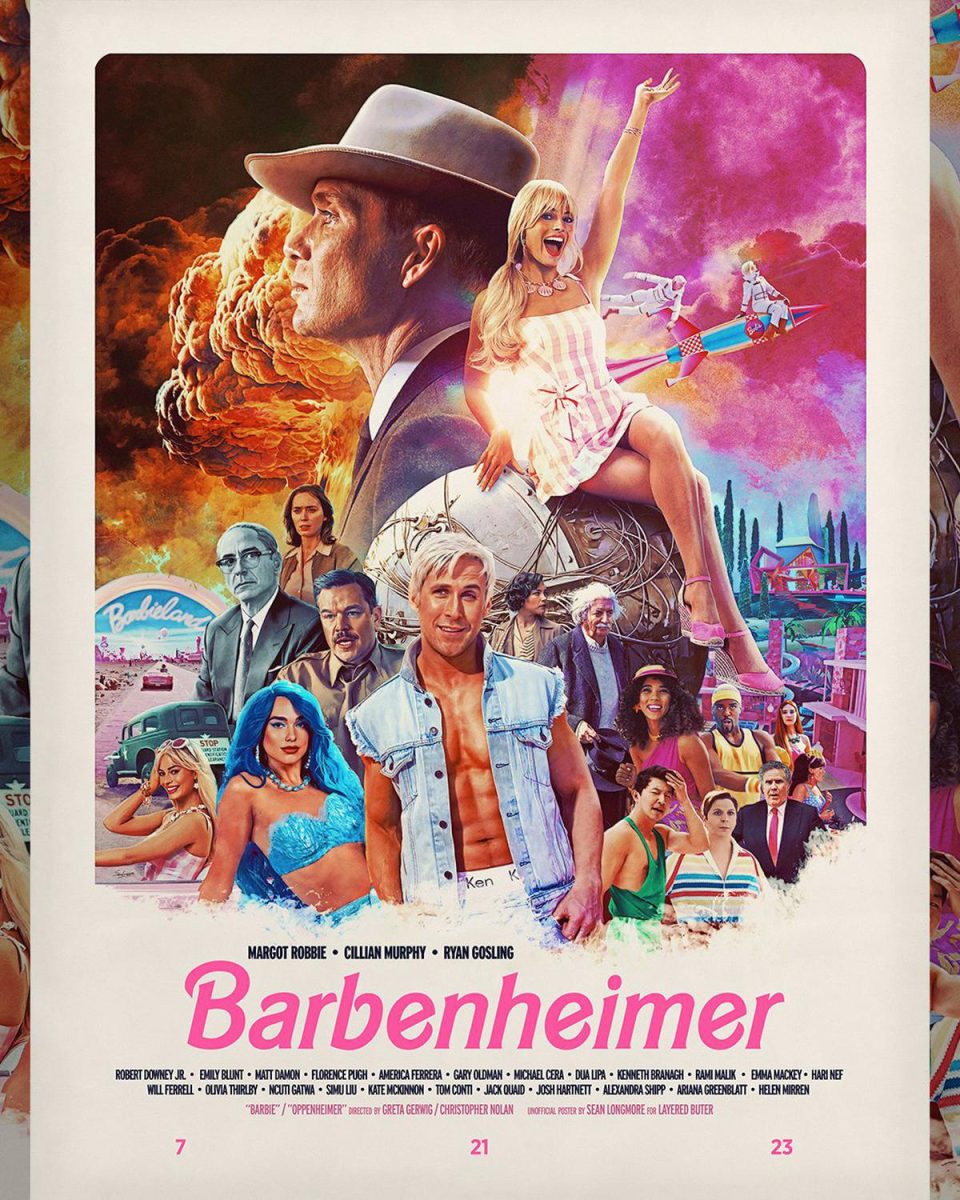The theatrical event of Christopher Nolan’s “Oppenheimer”, a dramatized biopic concerning the events of the top secret Manhattan project, and Greta Gerwig’s “Barbie” detailing Barbie and Ken’s seemingly perfect life, until they discover the real world, took this summer by storm. These movies were immensely popular in the box office, respectively bringing in $942.1 million and $1.44 billion dollars. Other than the obvious economic success of these movies, the fact that they were both released on the same date, brought completely separate audiences together, to watch equally entertaining and meaningful movies. According to Time magazine, more than 200,000 people bought tickets to watch Barbie and Oppenheimer on the same day.
When I went on my movie marathon, I saw many groups of people wearing bright pink cowboy hats, contrasted with the dark monochromatic outfits of the Oppenheimer viewers. While this may seem comical to some, I found it as a welcome change from the last few years, where Covid restrictions forced people indoors, away from friends. Also, I found that where people have been divided in our country, the dynamic duo of these two movies brought people together.
SPOILERS AHEAD FOR BARBIE AND OPPENHEIMER. To see how others felt about this movie phenomenon, I asked two people at our school, Mr. Sylvester, a Social Studies teacher, and Vivek Ravinutala, a freshman here at Morris Hills, about their experiences with the movies. By doing this, I was able to gauge just how different the movies were. Mr. Sylvester’s favorite part of Barbie was whenever Will Ferrell made an appearance, saying “I believe he is one of the greatest comedic actors of all time and any time he was on screen I was laughing.” Vivek said his favorite part of Oppenheimer was when the trinity happened, as he believed that it showed a moment of joy for the characters who had previously experienced many setbacks. The themes were also very different, as according to Mr. Sylvester, the theme of Barbie was that, “…women should and need to believe in themselves and their abilities no matter what the world says about them. They have the strength and power to do great things and have done great things.” Vivek said that he believed the theme of Oppenheimer was that, “…humanity as a whole has to be extremely careful with the possible implications of science… Also, I found it really interesting when Oppenheimer talked to Einstein about a scientific chain reaction…”
The conflicting tones of these two movies seem to cause people to question how the movies were seemingly blended together into one big movie event. Both Mr. Sylvester and Vivek agreed that these two movies were already blockbusters separately, so when they just happened to come out on the same day, they blended into a social event that brought people together. Mr. Sylvester also said that he believed that these movies were the first big blockbusters to come out after the Covid shutdowns, so the nature of these and their marketing strategies forced people into going to the movie theater, and to watch the movies in the traditional sense: watching them in one large stretch, rather than watching the movie over a span of four days.
All in all, there seems to be no clear reason as to why the combination of “Barbie” and “Oppenheimer” was such a large event. Having watched both movies, I honestly think that it was a clever coincidence that these two movies responded so well with their respective audiences. Generally, Barbie can be thought of as a nostalgic movie, with its bright pink color scheme and glitzy style, while Oppenheimer is described as a gritty and bleak biopic. Although the movies are so much more than these opinions, they covered a large demographic of viewers, connecting to a larger audience than would ever be achieved by movies individually. So, even though we may never get a Barbie-Oppenheimer crossover, their combined release may be a snapshot into how movies could be marketed and released in the future, hopefully creating another movie mega-event.


